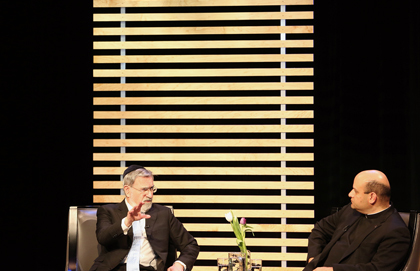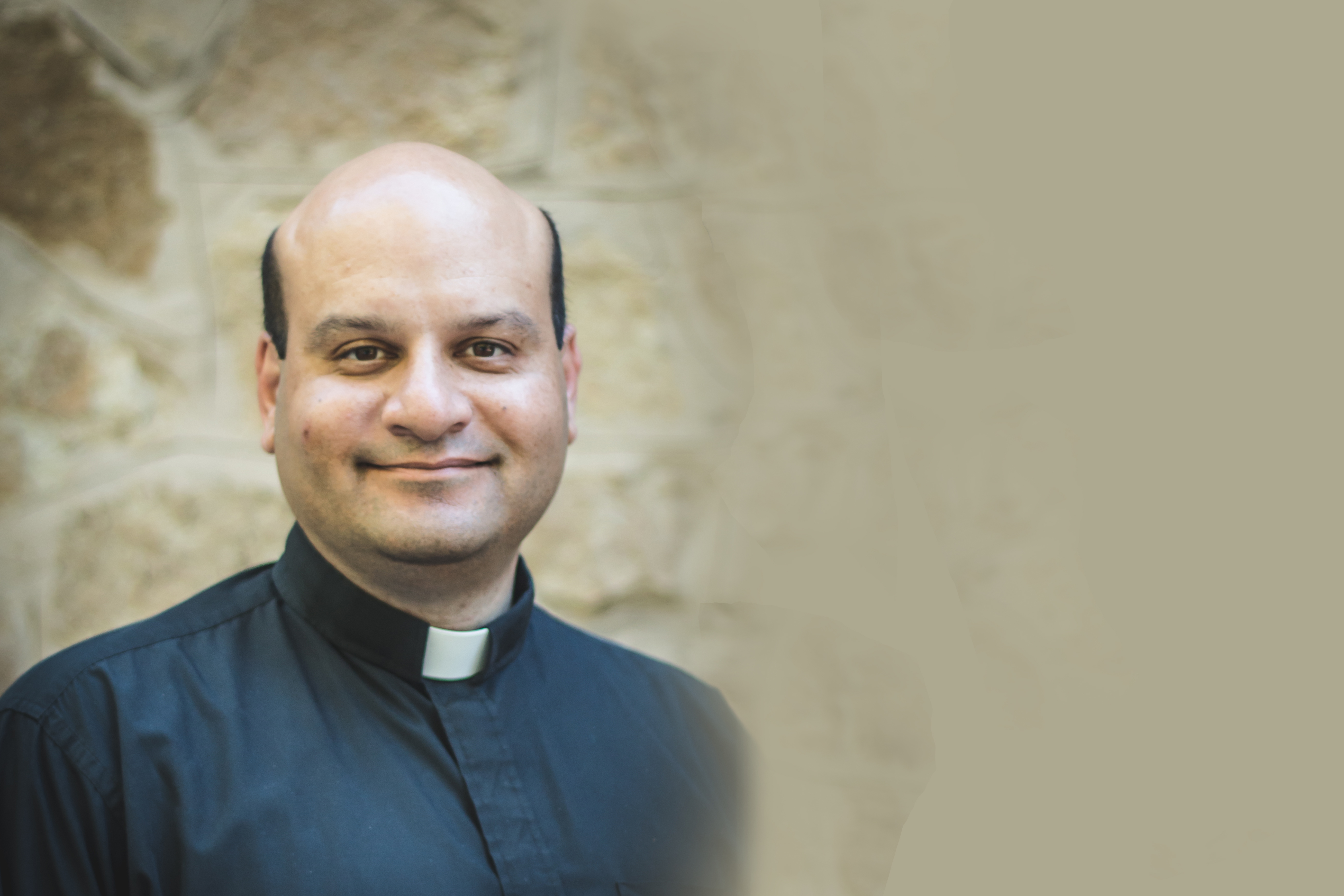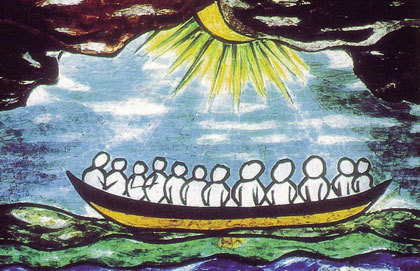Rabbi Sacks: A Public Theologian
Occasionally, timing works out just right. At Cardus, we had wanted to stage a public conversation with Rabbi Lord Jonathan Sacks, former Chief Rabbi of the United Hebrew Congregations of the Commonwealth (1991-2013) – otherwise known as the Chief Rabbi of Britain – for some time. Various difficulties prevented a visit last year, and so we had our Hill Family Lecture with Rabbi Sacks this past March in Toronto.
Two weeks before our public conversation, it was announced that he was the 2016 Templeton Prize laureate. It’s the most prestigious international prize for progress in religion, which “honours a living person who has made an exceptional contribution to affirming life’s spiritual dimension, whether through insight, discovery or practical works.” The prize was established in 1972 to recognize “entrepreneurs of the spirit – outstanding individuals who have devoted their talents to expanding our vision of human purpose and ultimate reality.” The first prize was given to Mother Teresa, and subsequent winners have included the Rev. Billy Graham, Aleksandr Solzhenitsyn, Charles Colson, Michael Novak, Charles Taylor and, last year, Jean Vanier.
Our conversation at the Glenn Gould Theatre in Toronto focused on his latest book, Not In God’s Name: Confronting Religious Violence, reviewed in this issue (p. 29). It is a remarkable book, but not because it speaks of overcoming a scourge that produces massacres of believers every week. “There have been hundreds of books about that since 9/11,” Sacks told our audience. What makes Sacks’ book so important and so engaging for serious Jews, Christians and Muslims is that it is an explicitly theological exploration of the roots of rivalry and the possibility of reconciliation.
The answer to the bad theology that gives rise to religious violence cannot be no theology, as if jihadists should become secular liberals. The answer to bad theology must be good theology. But excellence in theology, as in other fields, cannot simply be ordered up at will. It is rare.
An early attempt at a theological response was attempted by the pre-eminent Christian theologian of his generation: Joseph Ratzinger, or Pope Benedict XVI. At his famous address in Regensburg in 2006, the day after the fifth anniversary of 9/11, Benedict sketched out an argument that to act contrary to reason was to act contrary to God, and that violent coercion in the service of faith was contrary to reason. The lecture was greeted by violent riots throughout the Muslim world, but after that initial eruption, the lecture was met with a respectful theological engagement by leading Islamic scholars. Yet the argument, framed by Benedict in terms of faith and reason, had limited impact because it did not explicitly address the shared Biblical stories of the great Abrahamic faiths.
Rabbi Sacks does just that. Sacks places the roots of religious conflict in the sibling rivalries of the Scriptures sacred to Jews, Christians and Muslims. Those foundational and formational accounts deal with conflict, frequently violent conflict, not between aliens but in the bosom of the family.
“Yet the Hebrew Bible does talk about sibling rivalry…,” Sacks writes. “The point could not be made more forcefully. The first religious act, Cain and Abel’s offerings to God, leads directly to the first murder. God does seem to have favourites. There does seem to be a zero-sumness about the stories. It is no accident that Jews, Christians and Muslims read these stories the way they did.”
That God chooses whom He chooses is clear. And it appears that when God chooses one brother, He rejects the other: Isaac chosen, Ishmael rejected; Jacob chosen, Esau rejected; Joseph chosen, his brothers rejected. The chosen, therefore, likewise reject the rejected, and the seeds of conflict – sometimes violent conflict – are sown. Sacks suggests an alternative.
“What if the Hebrew Bible understood, as did Freud and Girard, as did Greek and Roman myth, that sibling rivalry is the most primal form of violence?” Sacks writes. “And what if, rather than endorsing it, it set out to undermine it, subvert it, challenge it, and eventually replace it with another, quite different way of understanding our relationship with God and with the human Other? What if it turned out to be God’s way of saying to us what he said to Cain: that violence in a sacred cause is not holy but an act of desecration? What if God were saying: Not in my name?”
The argument is detailed, but at the heart of it is something that Jews and Christians, as well as Muslims, might be astonished to hear: God does not reject Ishmael – father of Muslims – in choosing Isaac – patriarch of the Jews. God chooses Isaac, but also cares for Ishmael. They join together to bury their father, Abraham. The story ends in reconciliation, not contempt.
In 1986, when Pope John Paul II made his historic visit to the Great Synagogue of Rome, he famously referred to Jews as “our elder brothers in the faith.” It was a term of affection that was well-received by Jews. Yet when Benedict XVI made his own visit, he offered a correction. He observed, as Sacks does in this book, that it is usually the younger brother who usurps the position of the elder in the Scriptures, and it would be better simply to emphasize the fraternity. From a Catholic point of view, the latest from Sacks could be considered an extended commentary on Benedict’s insight. Indeed, the attractiveness of Sacks’ approach is the hallmark of Jewish theology, which is a deep engagement with the stories of the Torah. Often, Christians read them more in part than as a whole. On stage in Toronto, Sacks was able to neatly summarize Paul’s wrestling with the status of Gentile Christians by keeping in play the texts from both Galatians as well as Romans, reading them together.
“It takes a pope to correct a pope!” Sacks responded when I raised the question of “elder brothers.” And sometimes it takes a rabbi to offer Christians and Muslims a new way of looking at Genesis.
Poisoning Our Ecology
During Holy Week, the Vatican’s point man on social teaching, Cardinal Peter Turkson, visited Toronto, notably to address the Rotman School of Management. Rotman has a climate change series on, and it made sense to have the representative of Pope Francis, whose encyclical Laudato Si´ was intended in part to encourage bold action to fight climate change, drop in to outline the moral dimension of the ecological question. Pope Francis likes to speak of “integral ecology” even as his predecessors would speak of “human ecology.” The contention is that it is incoherent to insist on respecting the order in nature without respecting the nature of the human person. Working for a better natural ecology should be complemented by ensuring that the cultural environment does not become more polluted.
Convivium went to press before Turkson’s talks were given, but one expects that he would have praised Canada’s new enthusiasm for climate policy. We even have a federal minister of climate change! Of course, Canada has a long history of conservation and care for creation – as should be the case in a country that has so much creation to care for. Canada has been abundantly blessed with both great natural beauty as well as vast resources. There is now an emerging consensus that the very resource extraction industries that contribute to the economic prosperity of Canada need to be developed in a way that also mitigates and contains the environmental damage done. Just before Turkson’s visit, the first ministers agreed on the need for – if not the mechanics of – carbon pricing, something endorsed by the opposition Conservatives in Ontario. The dominant view today is that a prosperity that is not sustainable is not only economically short-sighted but also the consequence of a poorly formed moral vision that ignores our responsibility to be good stewards of creation. That vision is more than consistent with Biblical wisdom, even if its most vigorous proponents don’t have much time for those who bring a Biblical vision to public life.
The vision we bring is critical. We need to see reality as it is, paying heed to what scientists can tell us about the state of creation and the threats to it. But seeing reality as it is means seeing it not only as scientists do, in crude material terms. Just as it is wrong to see a resource only in terms of the profit it might yield to the developer, so it is wrong to see the human person only in terms of the functions he can perform, the autonomy he can exercise or the physical strength he possesses. This is most important when we face the physical realities of disease, dying and death. They are not only material but also personal realities, and to the human person is owed a respect and a care that exceeds that which is owed to the physical environment.
I hope that Cardinal Turkson highlights this passage from Laudato Si´:
“Neglecting to monitor the harm done to nature and the environmental impact of our decisions is only the most striking sign of a disregard for the message contained in the structures of nature itself. When we fail to acknowledge as part of reality the worth of a poor person, a human embryo, a person with disabilities – to offer just a few examples – it becomes difficult to hear the cry of nature itself; everything is connected. Once the human being declares independence from reality and behaves with absolute dominion, the very foundations of our life begin to crumble, for ‘instead of carrying out his role as a co-operator with God in the work of creation, man sets himself up in place of God and thus ends up provoking a rebellion on the part of nature.’”
The report of the Special Joint Committee on Physician-Assisted Dying proposes acceleration in the crumbling of those foundations. One of the most fundamental connections that marks a human civilization worthy of the name is that which unites the healthy with the sick, the former caring for the latter. In contrast, the advance of euthanasia and assisted suicide is precisely the mark of the “throwaway society” that Pope Francis regularly decries, and against which Laudato Si´ is aimed. The corruption of the medical profession – severing the connection between the professionals who provide care and the patients who rely on them never to do harm – is particularly perverse. It would be a lethal irony if Canada, which takes pride in its environmental policies, were to poison its human ecology at the same time.
The old high-school philosophy question was whether a tree that falls in the forest makes a sound if there is nobody there to hear it. That scene appears to be something of an ideal for a certain type of environmentalist. The trees and the forests remain pristine, but the human presence is secondary. If a person cries out in pain, in loneliness, in despair and there is no one who cares to hear him, does he really make a sound? If our neighbour cries out and we choose to stifle it, to whom exactly are we listening?
A Funeral Fit For A Christian
Death comes for all, sometimes suddenly. Such was the case for Antonin Scalia, the late American supreme court justice. It was a privilege to be at his funeral at the Basilica of the National Shrine of the Immaculate Conception in Washington, the largest church in the Americas. Much like the funeral at St. James, the Anglican cathedral of Toronto, for the late Jim Flaherty, it was a graced moment important for our common life – a properly religious occasion that served also as a national civic event. It is salutary when great men of public life are buried as Christian disciples first and foremost; it reminds us that the State and politics have their limits.
After years of prominent Catholic funerals in the United States that have been missed opportunities to preach the Gospel – those of Edward Kennedy and Stan Musial are but two recent examples – the Scalia funeral was both edifying and evangelizing. Recent Canadian funerals – Ralph Klein and Jack Layton come to mind – have been conducted as if the deceased were present to accept an honorary degree or lifetime achievement award. The national funeral of Céline Dion’s husband at Montreal’s Notre Dame Basilica in January was the latest transgression. Archbishop Christian Lépine tried heroically to focus attention on the things of God, but with the red carpet for the paparazzi laid down outside, the litany of prominent politicians acknowledged at the outset, the playing of various Céline songs during the Mass and, of course, the eulogies, it was not an easy task. There was even a priest who, after distributing Holy Communion, stopped to chat with Céline, Blessed Sacrament still in hand. It was hard to think it an act of worship intended to please God rather than the arts critics.
The homily at Justice Scalia’s funeral was preached by his son, Father Paul Scalia. He began by reminding us that we were gathered because of “one man… Jesus Christ.” Justice Scalia himself would have been pleased. His son went on to quote his father, but not from any of Scalia’s voluminous writings as a Supreme Court justice for nearly three decades. He quoted instead from a letter Justice Scalia had written to Pastor James Goodloe of Grace Covenant Presbyterian Church in Richmond, Va., after attending the 1998 funeral of Lewis Powell, a justice who had served on the Supreme Court with Scalia. He had been very impressed with the funeral and wrote to tell Powell’s pastor just that.
“Perhaps the clergymen who conduct relatively secular services are moved by a desire not to offend the non-believers in attendance – whose numbers tend to increase in proportion to the prominence of the deceased,” Scalia wrote.
“What a great mistake. Weddings and funerals (but especially funerals) are the principal occasions left in modern America when you can preach the Good News not just to the faithful but to those who have never really heard it."
“I have always thought there is much to be said for such a prohibition [on eulogies],” the son quoted the father as writing. “Not only because it spares from embarrassment or dissembling those of us about whom little good can truthfully be said, but also because, even when the deceased was an admirable person – indeed, especially when the deceased was an admirable person – praise for his virtues can cause us to forget that we are praying for, and giving thanks for, God’s inexplicable mercy to a sinner.”
The “inexplicable mercy” of God is what Christian funerals celebrate and what Christians at funerals ought to beseech for the deceased.
Scalia belonged to a generation in which the leading Catholics in public life were ambiguous models. Scalia was an exception – a man who practised his faith dutifully, spoke about it openly and offered a witness that what his son called the “adventure of family life” – 55 years of marriage and nine children – was still happily possible. Alluding to the last words of Saint Thomas More, whose image Scalia had included in his official portrait at the Supreme Court, Father Scalia said that his father was “the country’s good servant because he was God’s first.”
Some Rights Are More Equal Than Others
Antonin Scalia made influential a school of constitutional jurisprudence that was out of favour when he joined the Supreme Court of the United States in 1986. Originalism holds that judges ought to enforce only the meaning of the original text of the Constitution when it was promulgated. For example, on abortion the Constitution is silent, so legislatures are free to forbid or permit the practice according to the procedures of democratic deliberation. He steadfastly refused the dominant view that the Constitution outlines a general vision of human liberty and the common good that judges are to enforce according to how they best understand it. Those who champion that view call the Constitution a “living document,” leaving Scalia – according to his customary wit – with the apparent alternative of regarding the constitution as a “dead document.” He rejected the “living Constitution” in favour of what he called an “enduring” Constitution.
Canada got into the judicial review business in earnest with the repatriation of its Constitution in 1982, complete with the Charter of Rights and Freedoms. Just months before Scalia brought originalism to the American Supreme Court, it was declared dead on arrival in Canada. In the United States, the “living constitution” advocates would argue that the framers in 1787 could not possibly have envisioned late 20th-century society, and so the constitution had to grow to accommodate the emerging realities.
The same would not seem to apply here, as the Charter was only a few years old when the Supreme Court of Canada began to take cases in light of it. Surely in Canada the court would have to hew to the original intent? A different view from the original intent so soon after promulgation could not be a development of thinking but simple disagreement. And if it were a policy disagreement, it would seem that Parliament should prevail in a democracy rather than judges.
All that notwithstanding, in one of its first Charter cases, BC Motor Vehicle Act, Canada’s bench rejected originalism tout court. The December 1985 court decision was unanimous, with the opinion authored by Antonio Lamer, who rose to become chief justice in 1990. Lamer reached back to the famous Persons Case, decided by the Judicial Committee of the Privy Council in 1929, in which the jurists wrote that the constitution was a “living tree” that had to grow and adapt as time passed.
“If the newly planted ‘living tree’ which is the Charter is to have the possibility of growth and adjustment over time, care must be taken to ensure that historical materials such as the Minutes of Proceedings and Evidence of the Special Joint Committee do not stunt its growth,” Lamer wrote. Just like that, all evidence of what the drafters of the Constitution Act 1982 intended was declared to be worthy of only “minimal weight” in court decisions. The judges would approach the constitutional text afresh to decide what it meant. The tree would live, and the nine justices of the Supreme Court would be the attentive arborists. Last November, we got unusual insight on how the arborists tend to the tree.
Convivium’s friend Douglas Farrow had convened at McGill University a conference on Religion & Conscience in Court. Where did freedom of religion and conscience stand after the Loyola decision on religious freedom in education and the Carter decision on assisted suicide? Professor Farrow invited Justice Louis LeBel to address the conference. LeBel had signed both Loyola and Carter before retiring from the court in the summer of 2015. He was now free to speak about how the court went about its work.
In my own remarks on a panel with LeBel, I observed that freedom of conscience and of religion were the first freedoms listed in the Charter and therefore required special attention. In response, LeBel noted that there was no “hierarchy of rights” provided by the Charter itself. That ignores that the Charter begins by enumerating “fundamental freedoms,” including freedom of speech, the press, of assembly and association. That might have been what the parliamentarians planted in 1982, but not what the judges have decided to cultivate.
LeBel explained that while there was no hierarchy of rights, over time certain rights have emerged as more central or more important in the Supreme Court’s jurisprudence. The court did not recognize the hierarchy written in the Charter, but itself established a hierarchy in the court’s decisions. What might that hierarchy be?
“The right to equal treatment,” explained LeBel, referring to section 15 of the Charter, was the most central. He added two others: “The right to be treated with respect, and the right to participation in society.”
The primacy of equality rights means that in conflicts, real or apparent, between equality rights and fundamental freedoms, including religion and conscience, equality rights win. The latter two rights are most remarkable for not appearing in the Charter at all. Yet LeBel, fresh off the court, argues that they are more important than the actual rights in the Charter. Given that they have been invented by the court, it belongs only to the court to interpret them according to its own lights.
That is evidently at work in Carter, which requires the federal government to put in place a regime permitting assisted suicide. In the 1990s, the court decided that its concept of human dignity, of respect and of participation meant that laws against assisted suicide were constitutional. Twenty years later, it has ruled the opposite. It’s a remarkable tree that is that mobile, replanting itself in entirely different soil as required.
A similar approach unites the Obergefell decision on gay marriage in the United States and Carter in Canada. It is the right to be treated with respect, formulated as a requirement of human dignity.
“Dignity differs radically from privacy,” wrote American Peter J. Leithart in First Things this past March. “Privacy protects one’s right to do what one desires behind closed doors. Though [the American court] links dignity to autonomy, dignity is oriented to public rather than private life. It’s the right to be granted respect for the ‘distinctive identity’ that one has chosen. In Obergefell, [Justice] Kennedy cited a case where Tennessee refused to recognize a gay marriage performed in New York. This was a failure to grant ‘the basic dignity of recognizing [the] New York marriage.’ Tennessee owed the couple recognition.”
Dignity, the right to be respected and the right to participation have become a sort of super right, roving wherever the justices wish it to go, fashioning whatever good the justices think needs to be accomplished. In contrast, to restrict the court to the fundamental freedoms actually written in the Charter would be a “dead tree” jurisprudence. The Supreme Court exposed for us by LeBel would not be content with such a modest role. It prefers the living tree. And it gets to decide which rights get to live and which get to die.
Thirty Years After The Greatest Moment In Sports
For reasons that are not entirely clear, aside from the fact that Internet lists – Top 10 Active Volcano Vacation Sites! – seem to be irresistible and generate the desired clicks, Sports Illustrated put out its “100 Greatest Moments in Sports History” in March. No prize for guessing what an American publication would choose for No. 1. That would be the “Miracle on Ice”: the U.S. hockey team’s victory over the Soviet Union at the 1980 Olympics in Lake Placid. Given the obligatory No. 1, Jackie Robinson breaking the colour barrier in major league baseball was No. 2, which is almost as mandatory, but sometimes replaced in American eyes by Jesse Owens at the Hitler Olympics (No. 3). You get the picture? America vs. Soviets, America vs. its racist past, America vs. Nazi Germany – it’s the greatest moments in political sports history.
For sports moments of less political import, we get Muhammad Ali of course – The Thrilla in Manila over Joe Frazier (No. 5) and the Rumble in the Jungle over George Foreman (No. 14). But what caught my eye was that SI put Tiger Woods’ debut and win at the Masters in 1997 at No. 7, and Jack Nicklaus’ last Masters victory in 1986 at No. 17. That makes the entire list suspect, for the 1986 Masters, the 30th anniversary of which will be celebrated this April, is likely the greatest moment in sports history, period. The combination of sheer improbability, masterful performance, historic importance and noble character make it hard to match. The Bear roared again at golf’s most hallowed ground – with apologies to the Old Course at St. Andrew’s – and it lifted up everyone who desired to celebrate excellence in both sports and sportsmen.
The Masters begins now with Jack Nicklaus hitting the ceremonial first tee shot at Augusta National. Fans will applaud the greatest golfer of all time – 18 major championships, six-time winner of the Masters – now in retirement at age 76. But all thoughts will be on a magical Sunday 30 years ago, when the Golden Bear – mocked then as the Olden Bear – won his sixth Masters at age 46, in what many consider the most exciting final round in any golf tournament, ever.
In 1986, Nicklaus was six years removed from his last major championship. He could still play, but no one thought he could win. Then he shot seven-under-par over the last 10 holes on Sunday to pass eight players and win his last and sweetest victory. The galleries at Augusta shouted themselves hoarse for him and the golf world cried tears of joy. A good man had done a great thing.
“The crowd exploded – clapping, shouting, jumping, hugging, some making noises they weren’t aware they were making,” wrote Tom Clavin in One for the Ages, published to commemorate the 25th anniversary back in 2011. “It was the most raucous reaction ever to what a player had achieved.”
It says something about the 1986 Masters that books have been written to commemorate its anniversaries. Clavin has captured the emotion and drama of that perfect afternoon. John Boyette, sports editor of the Augusta Chronicle, has another slim but fun volume, 1986 Masters, with photographs, graphics and contemporary press clips that are a treat for any Nicklaus fan. The test of a great sports moment is not whether it qualifies for highlight of the night on SportsCentre; the test is whether, decades later, it retains its power in print. The roars from Augusta in 1986 still echo from the page.
Nicklaus’ achievement was all the greater for whom he beat. Of the eight players he overtook on Sunday, Seve Ballesteros, Nick Price, Bernhard Langer, Tom Kite and Greg Norman all went on to win majors – nine in the next seven years. Fans witnessed not a walkover but an epic battle.
“I’ve never, ever heard golf fans react the way they did that Sunday,” remembers long-time broadcaster Verne Lundquist. “And nothing has ever come close, not even with Tiger Woods.”
Yes, Tiger. Seven years ago I wrote that Tiger would surpass Nicklaus’ record 18 majors. That was a few months before his moral wretchedness was exposed and his game suffered. Time, dissolution and injuries mean that he is no longer a great player, and what even Nicklaus expected once – that Tiger would beat his record – will not happen. Nicklaus will remain the greatest player ever. Indeed, in the major championships, Nicklaus finished first 18 times, second 19 times and third 9 times. With four majors a year, that is the equivalent of playing for 12 straight years and only missing the top three twice. As an encore, Nicklaus tied for sixth place at the Masters in 1998 – at age 58.
The galleries cheered of course for Tiger. But not like they did for the Golden Bear. Admiration for the golfer and admiration for the man were united in Nicklaus. “Golf was not a number one priority in my life, never was actually,” Nicklaus told Boyette six months past his 50th wedding anniversary. “My family always was No. 1.”
The family was present in 1986. Mrs. Nicklaus decided to come to Augusta to watch her son for the first time since 1959. Jack’s wife, Barbara, was present as always. His sister, too. And most endearing of all, Nicklaus’ eldest son, then 24-year-old Jackie, served as his father’s caddie. Their emotional embrace at the 18th green is remembered as much as the actual play.
Last year, I was privileged to be at Augusta National to watch perhaps the most dominant Masters’ win ever, that of Jordan Spieth, who not only tied Tiger Woods’ 1997 course record but also led from start to finish, something not even Tiger has done. Seeing Augusta National in person only confirmed it as a fitting setting for sports history.






